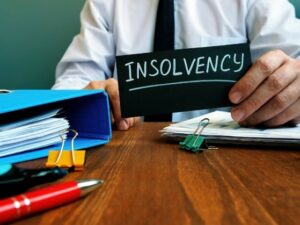The Enterprise Investment scheme (EIS) and the Seed Enterprise Investment Scheme (SEIS) are two of a number of United Kingdom government initiatives which encourage innovation by granting private investors a significant tax break when investing in early stage, ‘high-risk’ companies.
SEIS VS EIS: WHAT IS THE DIFFERENCE?
The two schemes are similar, but have some important differences.
SEIS is designed to help your company raise money when it starts to trade. It does this by offering tax reliefs to individual investors who buy new shares in your company. You can receive a maximum of £150,000 through SEIS investments. This will include any other state aid received in the 3 years up to and including the date of investment. In addition, this will count towards any limits for later investments through other venture capital schemes.
EIS, on the other hand, is designed so that your company can raise money to help grow your business. It does this by offering tax reliefs to individual investors who buy new shares in the company.
Under EIS, you can raise up to £5 million each year, and a maximum of £12 million in your company’s lifetime. This also includes amounts received from other venture capital schemes. Your company must receive investment under a venture capital scheme with 7 years of its first commercial sale.
With both SEIS and EIS, there is no inheritance tax to pay on the shares held for at least two years. Finally, if shares are eventually sold at a loss, the investor may offset the loss against their capital gains tax.
WHAT COMPANIES CAN USE SEIS?
Your company can use the scheme if it:
- Carries out a new qualifying trade à If your company is already carrying out a qualifying trade, it must not have been carried out for more than 2 years by either your company or any other person who then transferred it to your company.
- Your company or any qualifying subsidiary, must not have carried out any other trade before you started the new trade.
- Is established within the United Kingdom.
- Is not trading on a recognised stock exchange at the time of the share issue.
- Has no arrangements to become a quoted company or a subsidiary of one at the time of the share issue.
- Does not control another company unless that company is a qualifying subsidiary.
- Has not been controlled by another company since the date of your company being incorporated.
Your company and any of its subsidiaries must:
- Not have gross assets over £200,000 when the shares are issued.
- Not be a member of a partnership.
- Have less than 25 full-time equivalent employees in total when the shares are issued.
WHAT COMPANIES CAN USE EIS?
Your company can use the scheme if it:
- Has a permanent establishment in the United Kingdom.
- Is not trading on a recognised stock exchange at the time of the share issue and does not plan to do so.
- Does not control another company other than qualifying subsidiaries.
- A ‘qualifying subsidiary’ means that your company must own more than 50% of the subsidiary’s shares. In addition, no one other than your company or one of its other qualifying subsidiaries can control this subsidiary. Further, there cannot be any arrangements which would put someone else in control of this subsidiary.
- The subsidiary must be at least 90% owned by your company where either the business activity you are going to spend the investment on is to be carried out by the qualifying subsidiary or where the subsidiary’s business is mainly property or land management.
- Is not controlled by another company, or does not have more than 50% of its shares owned by another company.
- Does not expect to close after completing a project or a series of projects.
Your company and any qualifying subsidiaries must:
- Not have gross assets worth more than £15 million before any shares are issued, and not more than £16 million immediately afterwards.
- Have less than 250 full-time equivalent employees at the time the shares are issued.
Your company must carry out a qualifying trade. If you are part of a group, the majority of the group’s activities must be qualifying trades.
HOW TO APPLY FOR SEIS & EIS?
Most investors will require advance assurance that your company is eligible for SEIS or EIS funding. An application therefore should be submitted to the HMRC before you start offering investors SEIS or EIS investment opportunities.
If you do not have advance assurance, you must provide the following information for your company and any subsidiaries:
- The business plan and financial forecasts.
- A copy of the latest accounts.
- An explanation of how you meet the risk to capital condition.
- Details of all trading and activities to be carries out, and how much you expect to spend on each activity.
- An up to date copy of the memorandum and articles of association.
- The information memorandum, prospectus or other document used to explain the fundraising proposal to your investors.
- Details of any other agreements between your company and the shareholder.
- A list of the amounts, dates and venture capital schemes under which you’ve previously received investment.
- Any other documents to show you meet the qualifying conditions.
We at Audley Chaucer can discuss in detail whether SEIS or EIS apply to your particular circumstances and assist you with this process. Please contact John Szepietowski at Audley Chaucer for more information on SEIS and EIS. This information is correct as at 9 November 2020.




